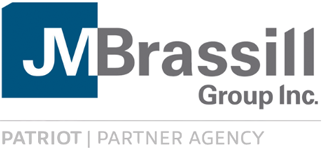 Employees who feel a sense of psychological safety at work are more likely to be engaged, productive and generating the innovative ideas needed to move an organization forward—but promoting that type of environment requires significant commitment on the part of the employer, a process that can be supported by HR leaders.
Employees who feel a sense of psychological safety at work are more likely to be engaged, productive and generating the innovative ideas needed to move an organization forward—but promoting that type of environment requires significant commitment on the part of the employer, a process that can be supported by HR leaders.
At a session at last month’s Health & Benefits Leadership Conference, Rachel Druckenmiller, director of wellbeing at national benefits-consulting firm Alera Group, emphasized the importance of psychological safety at work.
“Fear stunts our analytical thinking, our ability to be creative; essentially, we’re ‘dumber’ when we’re operating out of a state of fear,” she told the audience, noting a fear-inducing environment activates the amygdala—the fear response in our brain—and we can only focus on surviving, not thriving.
From a business perspective, she said, an environment in which employees are too anxious to speak up or worried about humiliation stymies growth and innovation.
“People put on a mask and only show the parts of themselves they think someone else will approve of,” she said. In psychologically safe environments, however, “they can let their guard down. They’re not in self-protection mode, worrying about who they can trust—so they can problem solve and be creative. All positive things happen when we’re not focused on trying to protect ourselves.”
Druckenmiller cited three ways employers can get serious about improving the psychological safety of their workforces:
Awareness
Managers, as well as HR leaders, should understand the strengths and weaknesses of their employees—as well as their own. As an example, Druckenmiller cited a client she once worked with: a self-described “bulldog,” who was gunning for the status of being her company’s first female vice president. While she was speeding toward that goal, on an interpersonal level, “she was leaving everyone in the dust and had no idea of how she was being perceived,” said Druckenmiller, who, as part of her coaching services, conducted extensive interviews of the people her client managed.
Consistent themes emerged from those conversations: The client only looked out for herself, she wasn’t a good listener and she didn’t seem to value employee input, for instance. While the client initially rebuffed those claims, Drunkemiller said she eventually softened to those perceptions and they worked together to identify potential blind spots she may continue to struggle with; the woman now keeps a list of reminders handy to help guide her interactions, Druckenmiller said.
On a broader level, organizations can undertake strengths assessments to help their employees and managers better understand one another and develop strengths-based leadership training.
Curiosity
Psychologically safe environments value curiosity over judgement, Druckenmiller said.
For instance, if a manager notices one employee responds to high-pressure environments with hostility, he or she should consider the context—such as that this person may have been raised in an environment with strict demands.
“Nobody came out of childhood unscathed, so maybe we can all have more compassion,” she said. “Difficult people are people who don’t feel safe, and sometimes all they need is just for someone to acknowledge that they’re doing something right.”
Managers and HR leaders should ask questions, listen attentively—using “door openers” like “Tell me more” and “Let me see if I got that right”—and respond with empathy.
Connection
Loneliness contributes to early death more than alcohol abuse, obesity and air pollution, Druckenmiller said—and the workplace is rife with it.
Managers and HR professionals can play a key role in combatting loneliness. Mandate device-free meetings, Druckenmiller suggested, as studies have shown that the mere presence of cell phones in a room stifles interpersonal connectedness and trust. “Unless you’re closing the hole in the ozone layer or curing cancer, you can wait an hour,” she said. “Take your Apple watch off.”
Survey team members about their interests and organize out-of-office excursions that people would actually want to go to, she added. “Connection and time together build trust, and trust is the foundation of psychological safety,” Druckenmiller said.
Management style can also enhance connections. If a manager focuses on an employee’s strengths, there’s only a 1% chance he or she will actively disengage from work; if the manager focuses on a person’s weakness, there’s a 22% chance he or she will actively disengage—a number that jumps to 40% when the manager ignores the employee altogether.
“The extent to which someone feels valued, appreciated and seen affects how they engage with people and it affects their health,” she said.
By Jen Colletta
Originally posted on hrexecutive.com



